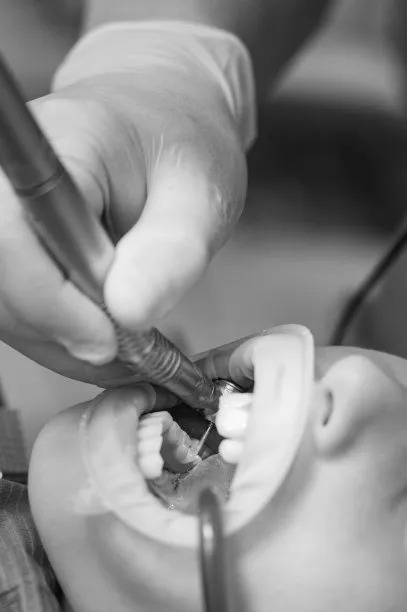The Top Countries Recognized for Their Exceptional Approaches to Dental Care and Treatment Solutions
original:health91192025-04-16 11:48:57
Summary: The provision of top-notch dental care varies worldwide, with certain countries leading the way in innovative approaches and comprehensive treatment solutions. This article highlights four ke
Summary: The provision of top-notch dental care varies worldwide, with certain countries leading the way in innovative approaches and comprehensive treatment solutions. This article highlights four key areas where national dental practices excel: advanced technology integration, preventive care strategies, public health initiatives, and patient-centered care. Each section not only illustrates the success of these countries but also provides insights into how their methodologies can serve as a paradigm for others. By understanding these exceptional approaches, we can appreciate the value of effective dental care in enhancing public health and patient satisfaction globally.
1. Advanced Technology Integration in Dentistry

Countries like Sweden and the United States are at the forefront of integrating advanced technology into their dental care systems. They utilize digital imaging, CAD/CAM technology, and 3D printing to elevate the standards of dental procedures. This incorporation of technology enhances precision in diagnostics and treatment planning, leading to significantly improved patient outcomes.
Moreover, teledentistry has gained traction, particularly during the COVID-19 pandemic. Nations that embraced digital platforms for virtual consultations and evaluations minimized delays in care and maintained continuity of services. This was particularly crucial in keeping patients engaged and informed about their oral health.
AI technologies are also revolutionizing the dental field. Countries that invest in artificial intelligence for predictive analysis are better equipped to identify potential dental issues before they escalate. This proactive approach not only aids in early intervention but also reduces overall treatment costs for both practitioners and patients.
2. Preventive Care Strategies in Leading Countries
Preventive care stands at the heart of effective dental health systems, as highlighted by Australia and Japan. These countries focus on educating patients about oral hygiene practices and the importance of regular dental check-ups. Public campaigns promoting good dental hygiene have been vital in reducing the prevalence of dental diseases.
In Japan, community-based initiatives encourage regular dental visits, often subsidized by the government. Such proactive measures ensure that financial barriers do not deter individuals from seeking necessary care. The emphasis on early detection leads to a decline in the incidence of severe dental issues, setting a global standard for preventive care.
Additionally, countries like Canada incorporate preventive strategies into their school systems. By teaching dental health at an early age, they instill lifelong habits that foster better oral health outcomes, creating generations of informed individuals who prioritize dental care.
3. Public Health Initiatives Driving Success
Public health initiatives play an essential role in shaping effective dental care policies. Countries like Finland have successfully implemented universal dental care, ensuring equitable access for all citizens. The Finnish model emphasizes the governments role in providing comprehensive dental health services as part of their overall healthcare system.
Such initiatives often include oral health assessments, fluoride programs, and campaigns aimed at reducing sugar consumption. These measures contribute to significant public health improvements, helping to decrease the need for extensive dental treatments over time.
Moreover, access to dental care in rural and underserved areas is a critical focus in countries like Denmark, where mobile clinics are deployed to reach isolated populations. This commitment to inclusivity ensures all communities can benefit from high-quality dental services regardless of their geographical location.
4. Patient-Centered Care Philosophy in Dentistry
The importance of a patient-centered approach in dental care is evident in countries such as Switzerland and the Netherlands. These nations emphasize the experience of the patient throughout the treatment process, aiming to cultivate a trusting relationship between patients and their dental care providers.
In Switzerland, patients are empowered with choices regarding their treatment plans, including cosmetic options. This high degree of autonomy fosters satisfaction and encourages individuals to engage actively in maintaining their oral health.
Furthermore, the Netherlands emphasizes a holistic approach that considers the emotional and psychological aspects of dental treatment. By addressing the fears and anxieties associated with dental visits, practitioners help to improve the overall experience and encourage consistent care-seeking behavior among patients.

Summary:
In summary, the world can learn significantly from the exceptional approaches various countries adopt in dental care. From advanced technology and preventive strategies to public health initiatives and patient-centered care, these practices contribute to enhanced health outcomes and higher patient satisfaction levels.
As we continue to explore the landscape of global dental health, it is clear that sharing these innovative solutions could lead to broader improvements in care. Encouraging nations to adopt similar methodologies may help address the universal challenges faced in dental health delivery.
This article is published by HEALTH9119 Medical Health Network https://www.health9199.com arrangement